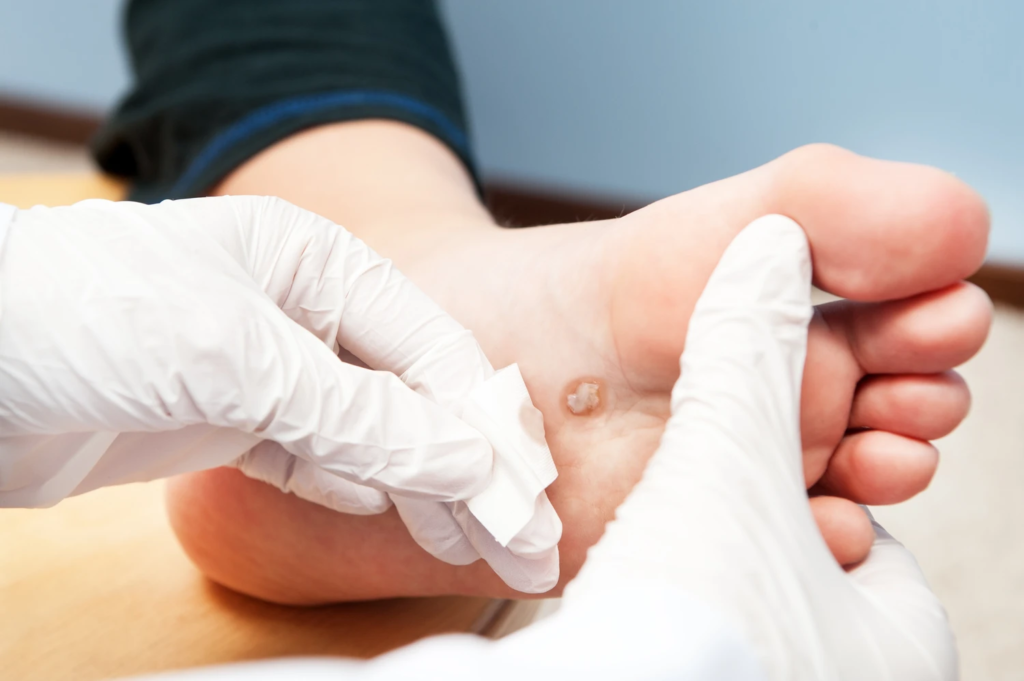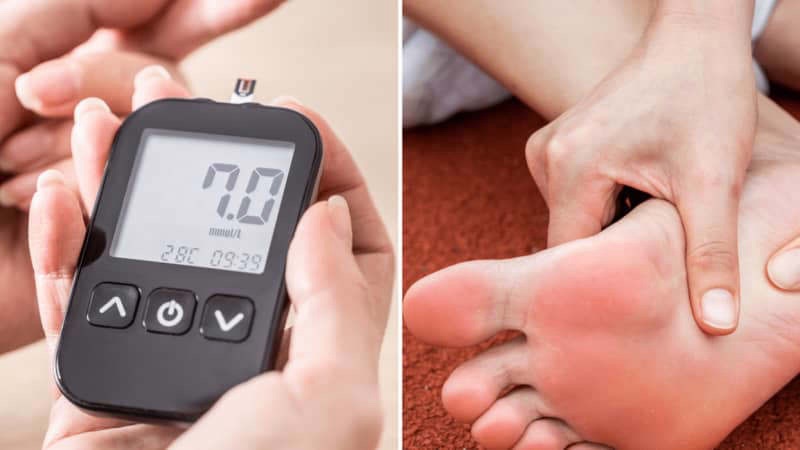Diabetes rates are on the rise, especially among individuals under 40, who are now facing higher risks than before. A recent study shows a notable 39% increase in type 2 diabetes cases among those aged 39 and younger. As diabetes prevalence grows, it’s essential to remain vigilant for its symptoms. Early detection and treatment are vital to prevent serious complications.
The primary indication of this condition typically manifests in the feet. Prolonged exposure to high blood sugar levels, a hallmark of type 2 diabetes, can lead to significant foot damage over time.

Individuals with diabetes indeed face a significantly higher 20-fold risk of amputation. This increased risk stems from elevated blood sugar levels that can cause nerve damage in the legs and feet. Such damage often leads to numbness, which poses a particular danger as it reduces the ability to sense pain or notice loss of sensation in the feet and toes.
As a result, diabetic patients may not detect ulcers or wounds, which can then become infected. These infections can progress to gangrene, a serious condition where tissue dies due to insufficient blood supply. In cases where gangrene causes extensive tissue damage that cannot heal, or when infections are resistant to other treatments, amputation may be the necessary course of action.
Signs to observe on the feet
To prevent complications, it is advisable to regularly inspect your feet. Diabetes UK recommends dedicating time daily to thoroughly examine your feet.
Additionally, an annual foot check-up by a healthcare professional such as a GP, diabetes nurse, or podiatrist is recommended.
Stay alert for any of these symptoms and consult your GP:
- Tingling or numbness
- Burning pain
- Persistent dull ache
- Smooth, shiny skin on the feet
- Hair loss on the legs and feet
- Loss of sensation in the feet or legs
- Swelling in the feet
- Lack of sweating on the feet
- Non-healing wounds or sores
- Cramps in the calves during rest or activity
Seek immediate attention from your local foot care team if you notice:
- Changes in foot color and shape
- Feet feeling unusually cold or hot
- Visible blisters and cuts that are not felt
- An unpleasant odor emanating from an open wound
Typical signs of diabetes include frequent urination, constant thirst, and excessive tiredness.
The recent rise in diabetes cases is attributed to poor dietary habits and obesity. Studies highlight the affordability and availability of foods high in fats, salts, and sugars as key contributors.
However, making healthier lifestyle choices can greatly lower the risk of diabetes. It is advised to maintain a balanced diet and participate in regular physical activity to keep your body mass index (BMI) within a healthy range.
